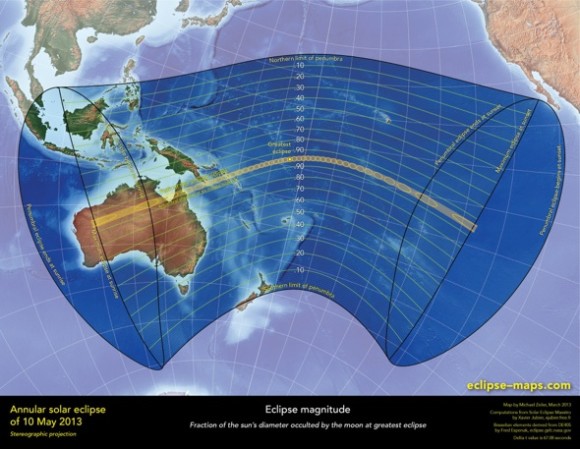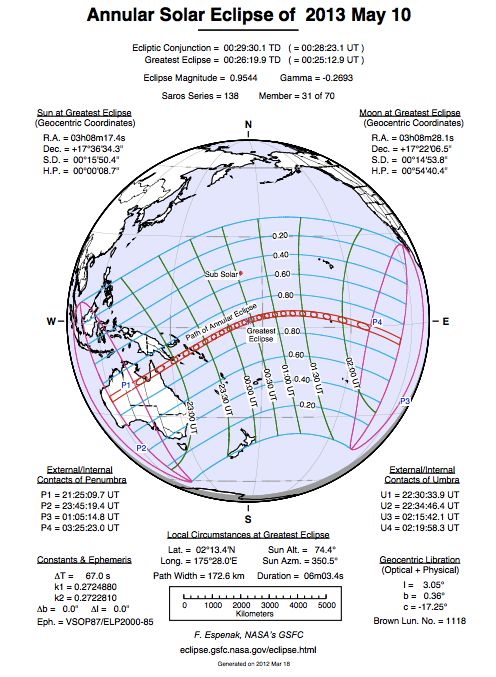
The May 10 annular eclipse as seen in the Pacific. While traversing the Pacific, the path of annularity will include the Hula peninsula of Papua New Guinea, where Pasachoff saw the 1984 total solar eclipse, and the northwestern Solomon Islands. The peak duration of the eclipse will be slightly east of the Tarawa (Kiribati) islands, with about 6 minutes of annularity.
The rest of Australia will see a partial eclipse. Weather permitting, everyone in Australia, except for the western third of Western Australia, would be able to see a partial eclipse. The Sun's diameter will be 36% covered in Melbourne at about 8:50 a.m. local time, 38% covered in Canberra, 39% covered in Sydney at about 8:55 a.m. local time, and 52% covered in Brisbane. Partial phases will also be visible in the southern Philippines, in eastern Indonesia, in Papua New Guinea, and in the northeastern part of New Zealand's south island and all of its north island, though with only 8% coverage in Auckland.
Hawaii and west coast of Baja California will see the partial eclipse, too. Also within the zone of partial phases are the entire Hawaiian Islands, with 44% of the solar diameter covered in Honolulu at maximum. The northeastern limit of the partial eclipse occurs just off the western coast of Baja California.
Special equipment is needed to watch the eclipse. During the partial phases or annularity, the remaining solar disk is too bright to look at safely, unless you are looking through specially filtered glasses that knock out 99.999% of the sunlight. Accidental projection of a partly eclipsed Sun should be visible on pavement or building walls in what is known as pinhole projection, with the small hole usually formed from small spaces between the leaves of trees. Binoculars can be used safely only if they are used to project an image down on the ground or across on a wall, given the low angle of the Sun; it is hazardous to look at the Sun through binoculars unless they are properly filtered.
When is the next eclipse? The next total eclipse of the sun will cross mid-northern Africa on November 3, 2013.
The information in this post was provided by Williams College in Williamtown, MA.
Bottom line: There will be an annular eclipse of the sun on May 10, 2013. Those watching will need special glasses to block the sun's blinding light.




Reader Comments
to our Newsletter